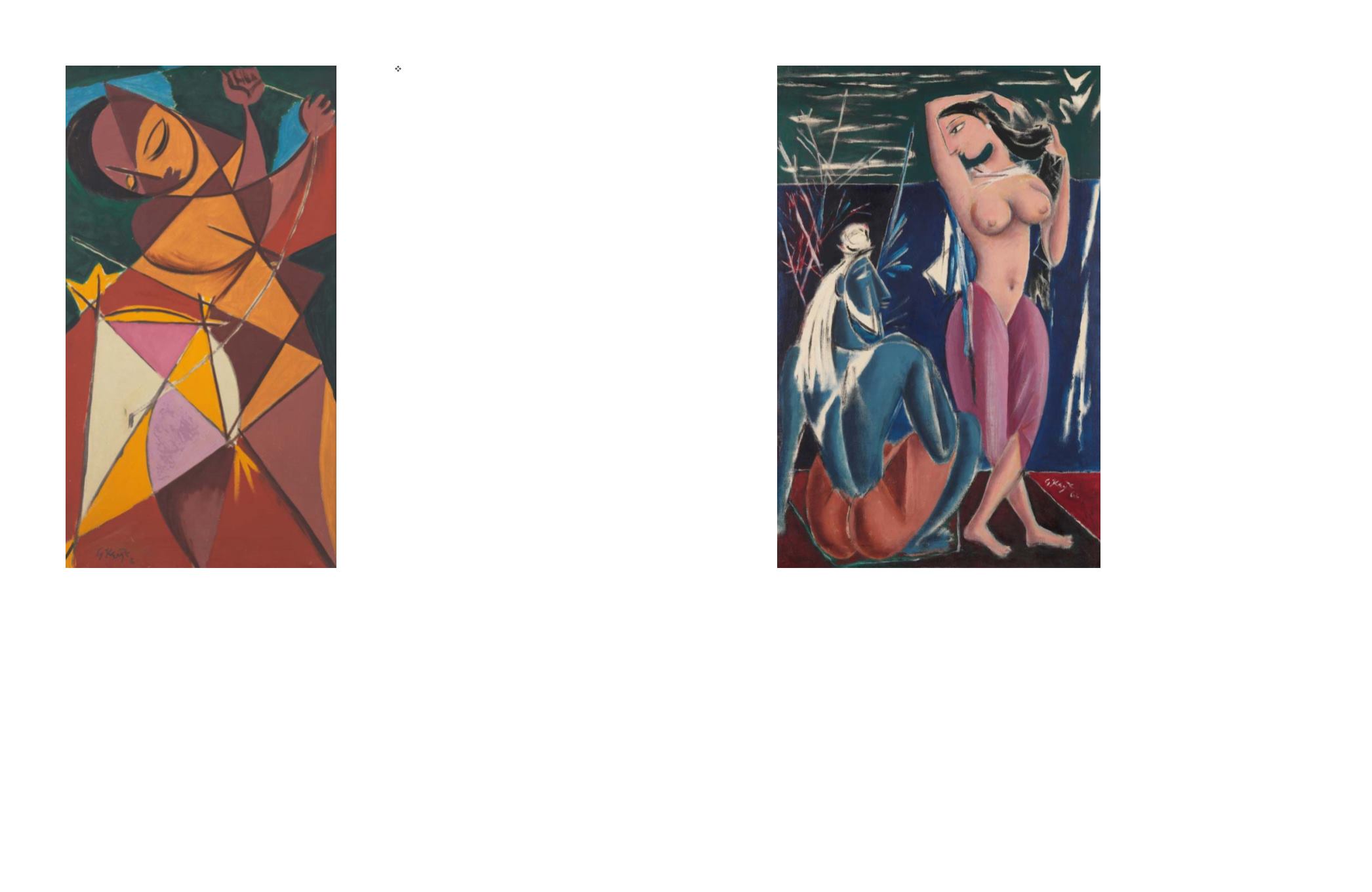

18
NOVEMBER 2016 | THE TIES THAT BIND
19
16
GEORGE KEYT
(1901 - 1992)
Untitled
Signed and dated 'GKeyt 66' (lower right)
1966
Oil on canvas
33.5 x 22 in (85.4 x 56 cm)
$ 27,275 - 33,335
Rs 18,00,000 - 22,00,000
PROVENANCE:
Sotheby's, New York, 1 April 2005, lot 139
Private Collection, North India
masculine regard.” (
George Keyt: A
Centennial Anthology
, Colombo: The
George Keyt Foundation, 2001, p. 27)
Rooted in Hindu mythology and love
poetry, the present lot depicts an oft
repeated thematic preoccupation
of the artist—Radha and Krishna.
According to Tissa Devendra, “The
subtle eroticism of the Krishna legend
provided him the perfect mythic
setting for his celebration of love and
life.” (p. 54)
The artist highlights the intimacy of
the couple through bold, curving
lines and a sensuous grace that had
become the cornerstone of the
Cubist principles he had adapted in
his vocabulary to suit a Sri Lankan
modernist idiom. “The lyric painting
of George Keyt is sensuous Indian
poetry brought to canvas. [...] Keyt
takes as his primary theme woman as
the focus of man’s concern. He paints
her in flat planes, with bounding
lines and rich warmth of color. His
idiom occasionally carries in it a
hint of Picasso but is, once again,
in direct line with the traditional
styles of Central India, Mewar, and
Bahsoli. But the originality of Keyt’s
work is undoubted, and his work
remains uniquely his own.” (Richard
Bartholomew and Shiv S Kapur, eds.,
Husain
, New York: Harry N Abrams,
Inc., 1972, p. 27)
15
GEORGE KEYT
(1901 - 1992)
Untitled
Signed and dated 'GKeyt 61' (lower left)
1961
Oil on canvas
29.25 x 16.25 in (74 x 41 cm)
$ 12,000 - 15,000
Rs 7,92,000 - 9,90,000
PROVENANCE:
Private Collection, USA
One of Sri Lanka’s most celebrated
artists of the 20
th
century, George Keyt
was born into a family of Sinhalese-
Dutch origin and was raised in a
liberal cultural environment. This
perhaps helped him assimilate aspects
of Buddhist literature and temple
architecture, as well as Puranic narratives
and Indian erotic iconography—an
influence that would continue to
reveal itself in his works. Over a span
of six decades, his oeuvre underwent
a dramatic change in form and style,
following his encounter with the works
of Picasso and Matisse in the 1930s.
As seen in the present lot, Keyt,
according to W G Archer, is “concerned
with woman as the supreme object of


















